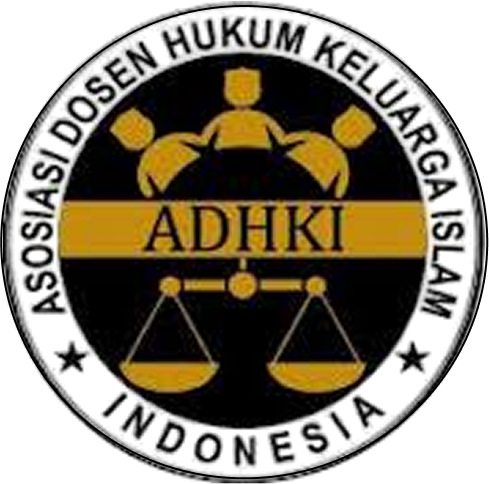Challenges, Tolerance and Belief Values in Interfaith Marriages
DOI:
https://doi.org/10.22373/trnc2372Keywords:
Intermarriage, Interfaith Marriages, Challenge, BibliometricAbstract
This research aims to find out how society globally prepares itself to face challenges, tolerance and belief values in interfaith marriages seen from the literature review. The stages in this research are the stages of identification, screening and eligibility for research data. Assisted by the publish on perish and vosviewer tools, 60 articles were obtained which were used in this research. There are 4 clusters produced, namelyCluster 1 (Red): in this cluster there are 13 items related to interfaith marriages and will be labeled "Marriage Rules with Different Cultures". Cluster 2 (Green): this cluster explains the label "Ethnic Acculturation in Marriage". Cluster 3 (Blue): This cluster is divided into 13 keyword items consisting of "Ethography in Marriage". Cluster 4 (Yellow): This yellow cluster consists of 7 keyword items, which will be labeled "Racist Actions against children of interfaith marriages".
The implementation in this research isInterfaith marriages can involve various aspects that need to be carefully considered to ensure a healthy and harmonious relationship between partners. Exploring the relationship between mixed marriagesand marital stability can have implications for family dynamics and long-term relationship outcomes
References
Amri, A. (2020). Interfaith Marriage According to Positive Law and Islamic Law. In Sharia Media (Vol. 22, Issue 1).
Bessudnov, A., &Monden, C. (2021). Ethnic intermarriage in Russia: the tale of four cities. Post-Soviet Affairs, 37(4), 383–403. https://doi.org/10.1080/1060586X.2021.1957345
Haddaway, N. R., & Macura, B. (2018). The role of reporting standards in producing robust literature reviews. In Nature Climate Change (Vol. 8, Issue 6, pp. 444–447). Nature Publishing Group. https://doi.org/10.1038/s41558-018-0180-3
Irastorza, N., &Elwert, A. (2021). Like parents, like children? The impact of parental endogamy and exogamy on their children's partner choices in Sweden. Journal of Ethnic and Migration Studies, 47(4), 895–915. https://doi.org/10.1080/1369183X.2019.1654160
Khan, N. (2022). “Light cleaveth unto light”: Intermarriage discourse, LDS women of color, and the new racism. Critical Research on Religion, 10(1), 78–95. https://doi.org/10.1177/20503032211044437
Kukić, L. (2023). The last Yugoslavs: Ethnic diversity and national identity. Explorations in Economic History, 88. https://doi.org/10.1016/j.eeh.2022.101504
Lill, P., Wald, A., & Munck, J. C. (2020). In the field of tension between creativity and efficiency: a systematic literature review of management control systems for innovation activities. European Journal of Innovation Management, 24(3), 919–950. https://doi.org/10.1108/EJIM-11-2019-0329
Ma, Z., Cooper, P., Daly, D., & Ledo, L. (2012). Existing building retrofits: Methodology and state-of-the-art. Energy and Buildings, 55, 889–902. https://doi.org/10.1016/j.enbuild.2012.08.018
Nagayoshi, K., OsanamiTörngren, S., &Takenoshita, H. (2023). What does Intermarriage Say about Immigrant Integration in Japan? The Maintenance of a National and Gender Hierarchy through Marriage Norms. Journal of Immigrant and Refugee Studies, 21(2), 171–188. https://doi.org/10.1080/15562948.2022.2109091
Ningthoujam, D.S., Kshetri, P., Sanasam, S., &Nimaichand, S. (2009). Screening, Identification of Best Producers and Optimization of Extracellular Proteases from Moderately Halophilic Alkalithermotolerant Indigenous Actinomycetes. In World applied sciences journal (Vol. 7, Issue 7, pp. 907–916). researchgate.net. https://www.researchgate.net/profile/Debananda-Ningthoujam/publication/234009060_Screening_Identification_of_Best_Producers_and_Optimization_of_Extracellular_Proteases_from_Moderately_Halophilic_Alkalithermotolerant_Indigenous_Actinomycetes/links/09e4150e
Oksuzyan, A., Drefahl, S., Caputo, J., &Aradhya, S. (2023). Is it Better to Intermarry? Immigration Background of Married Couples and Suicide Risk Among Native-Born and Migrant Persons in Sweden. European Journal of Population, 39(1). https://doi.org/10.1007/s10680-023-09650-x
Page, MJ, McKenzie, JE, Bossuyt, PM, Boutron, I., Hoffmann, TC, Mulrow, CD, Shamseer, L., Tetzlaff, JM, Akl, EA, Brennan, SE, Chou, R., Glanville, J ., Grimshaw, J.M., Hróbjartsson, A., Lalu, M.M., Li, T., Loder, E.W., Mayo-Wilson, E., McDonald, S., … Moher, D. (2021). The PRISMA 2020 statement: An updated guideline for reporting systematic reviews. In The BMJ (Vol. 372). BMJ Publishing Group. https://doi.org/10.1136/bmj.n71
Potarca, G., & Bernardi, L. (2021). The Intermarriage Life Satisfaction Premium. Journal of Happiness Studies, 22(3), 1413–1440. https://doi.org/10.1007/s10902-020-00278-w
Rosen, J. E., & Greif, G. (2023). The Voices of Interracial and Interethnic Couples Raising Biracial, Multiracial, and Bi-ethnic Children Under 10 Years Old. Child and Adolescent Social Work Journal, 40(5), 671–683. https://doi.org/10.1007/s10560-021-00805-5
Sha, H. (2020). Transnational marriage in Yiwu, China: trade, settlement and mobility. Journal of Ethnic and Migration Studies, 46(11), 2326–2345. https://doi.org/10.1080/1369183X.2019.1675500
Tegunimataka, A. (2021). The Intergenerational Effects of Intermarriage. Journal of International Migration and Integration, 22(1), 311–332. https://doi.org/10.1007/s12134-019-00745-1
Togatorop, AR (2023). Interfaith Marriage: An Ethical Theology regarding Marriage according to the Christian and Islamic Religious Marriage Laws. In Journal of Religious and Socio-Cultural (Vol. 4, Issue 1). https://www.bps.go.id/indicator/27/176/1/nomor-nikah-talak-dan-
Uggla, C., & Wilson, B. (2023). Parental age gaps among immigrants and their descendants: Adaptation across time and generations? Population Studies, 77(2), 311–333. https://doi.org/10.1080/00324728.2021.1998583
Uma Sekaran, R.B. (2016). Research Methods for Business. www.wileypluslearningspace.com
Wong, G., Greenhalgh, T., Westhorp, G., Buckingham, J., & Pawson, R. (2013). RAMESES publication standards: Realist syntheses. BMC Medicine, 11(1). https://doi.org/10.1186/1741-7015-11-21
Published
Versions
- 2025-07-31 (5)
- 2025-07-31 (4)
- 2025-07-31 (3)
- 2025-07-31 (2)
- 2025-07-31 (1)
Issue
Section
License
Copyright (c) 2025 Liky Faizal, Mohammad Yasir Fauzi, Mohd Khairi Kamaruddin, Abdul Qohar

This work is licensed under a Creative Commons Attribution-ShareAlike 4.0 International License.
Authors who publish in Samarah: Jurnal Hukum Keluarga dan Hukum Islam agree to the following terms:
- Authors retain copyright and grant the journal right of first publication with the work simultaneously licensed Attribution-ShareAlike 4.0 International (CC BY-SA 4.0) that allows others to share the work with an acknowledgment of the work's authorship and initial publication in this journal.
- Authors are able to enter into separate, additional contractual arrangements for the non-exclusive distribution of the journal's published version of the work (e.g., post it to an institutional repository or publish it in a book), with an acknowledgment of its initial publication in this journal.
- Authors are permitted and encouraged to post their work online (e.g., in institutional repositories or on their website) prior to and during the submission process, as it can lead to productive exchanges, as well as earlier and greater citation of published work. (See The Effect of Open Acces)









